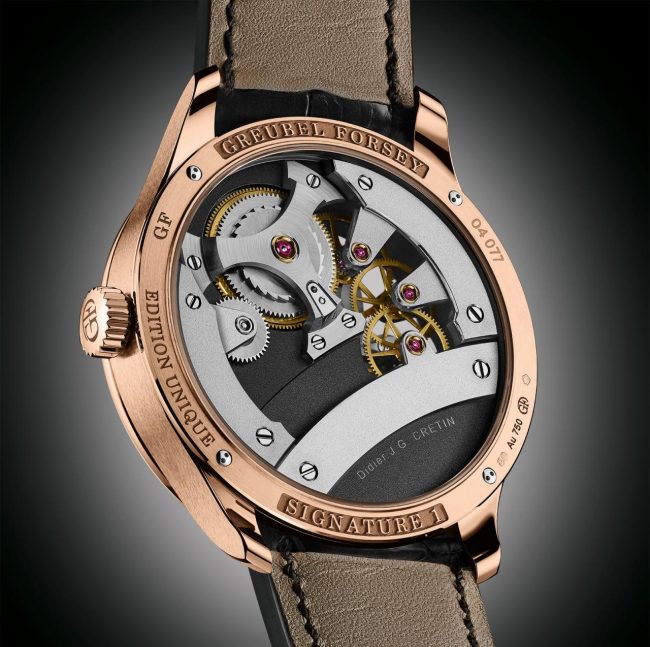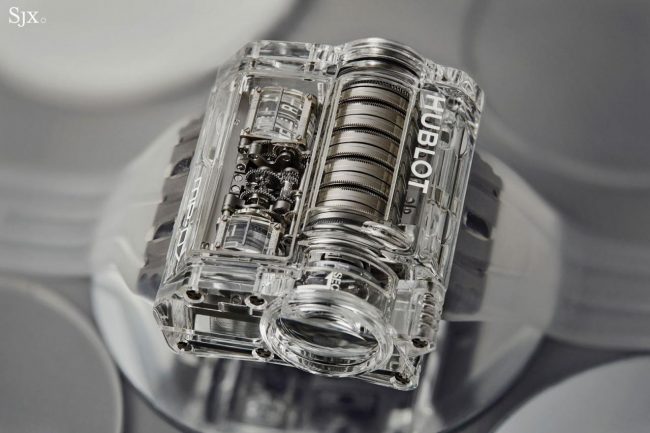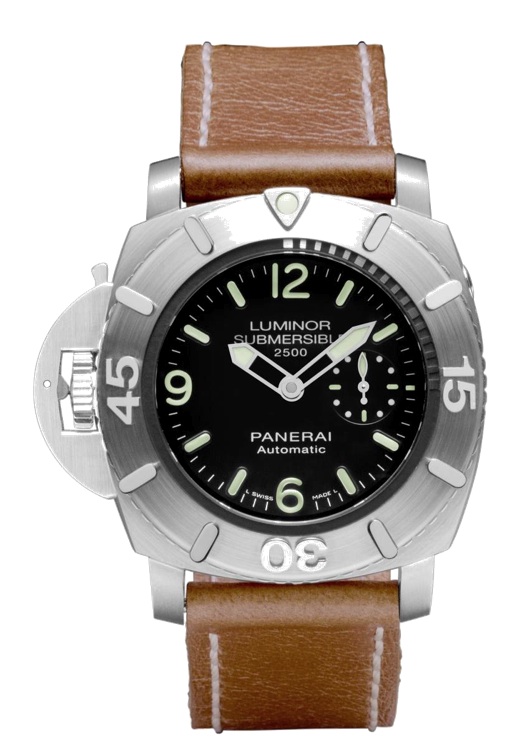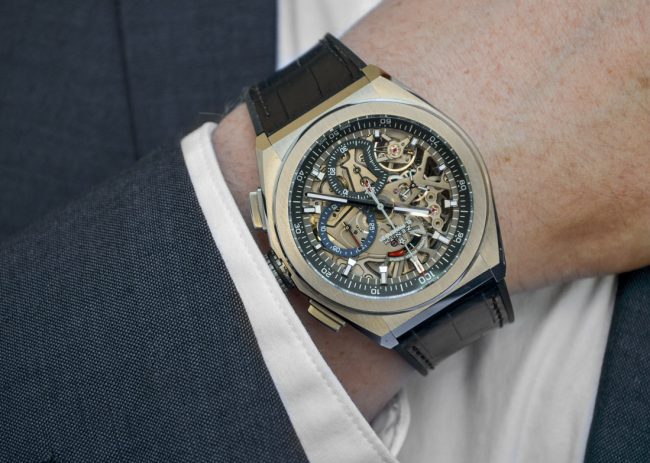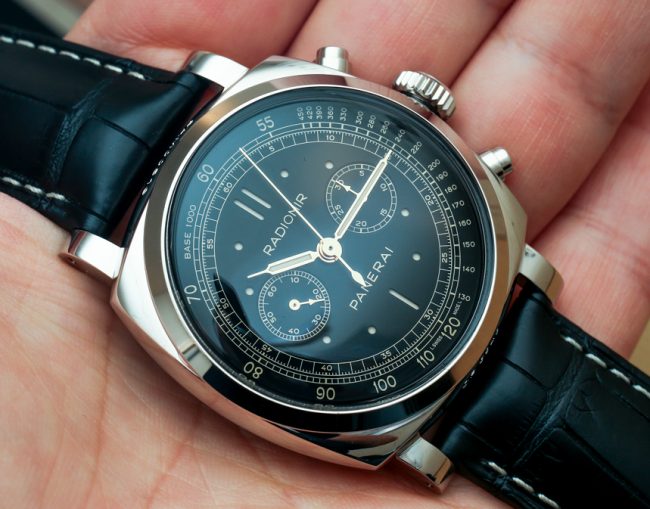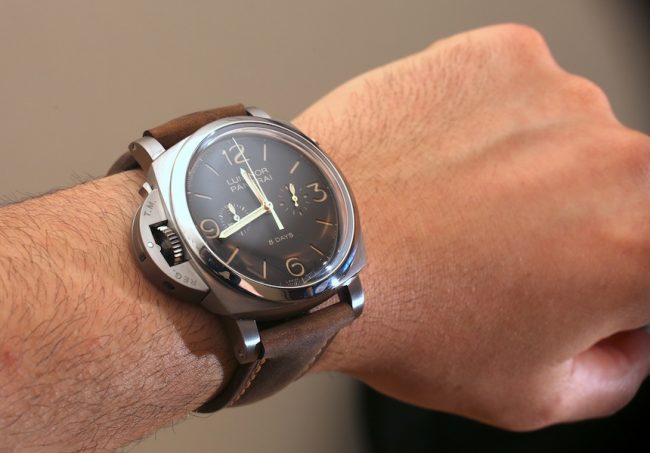High End Editorial: How to Give Breitling Wings Swiss Movement Replica Watches
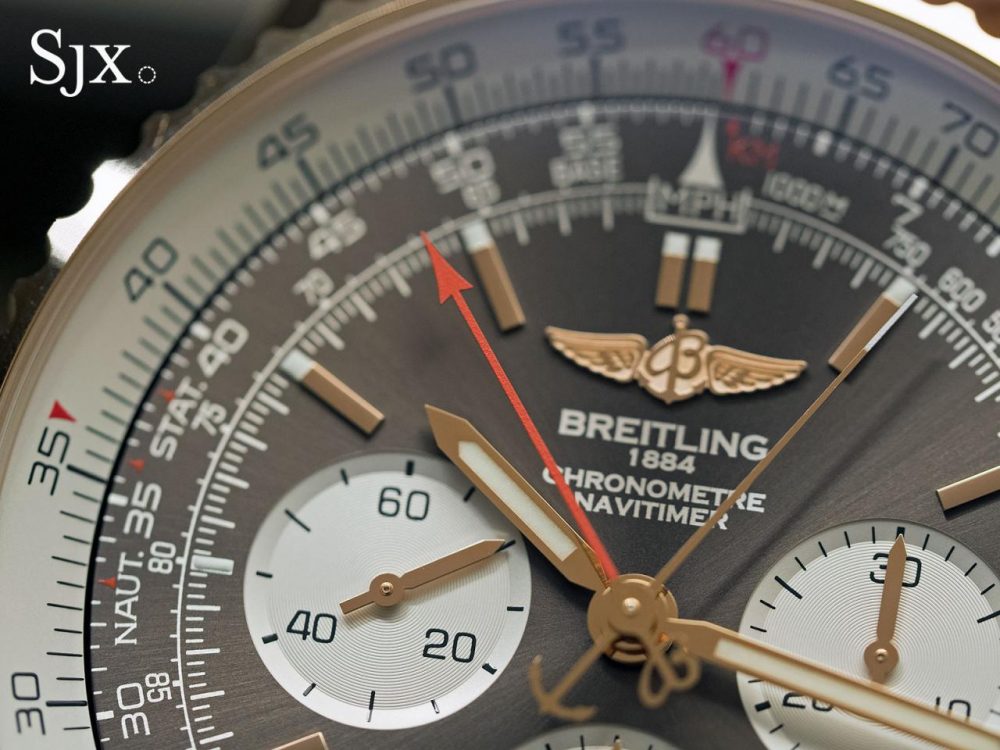
Without a shadow of a doubt, Lange is a powerhouse in modern watchmaking — that the flippin’ Death Star that gradually moves in the huge horological area, filled with little planets of gloomy but strangely likable brands. If absolute engineering awesomeness and quality of execution could somehow allow a watch to shoot lasers, I would expect to see a Lange do it first — and there’s no purpose to coming moment in that match, is there?The Tourbograph Perpetual ‘Pour le Mérite’ is still another weapon at the manufacture’s armada that testifies to the excellence and nearly terrifying know-how of Lange — and for this, I respect it without a morsel of reservation. But, strangely, for the very same reasons, somehow it’s still overshadowed by other pieces in Lange’s range that are, in their own ways, both striking, but much more Lange. Think of some of those three amazing Zeitwerks (hands-on here), the badass Lange 1 Lumen (hands-on) or, of course, the Datograph.After all is said and done, watching the Tourbograph Perpetual hands-on was a unforgettable and amazing encounter, as it damn well should be for any true watch enthusiast — but why I am awaiting SIHH 2018 is to see more Lange 1s and Zeitwerks, not just muscle-flexing, irrespective how impressive it is.
The recent departure of Richemont watch boss Georges Kern was a surprise, as was the fact that he was leaving to run Breitling, recently acquired by CVC Capital Partners. Promoted to head of watchmaking, marketing and digital at the Swiss luxury group only in April 2017, Kern’s elevation was the result of his triumphant 14-year stint as CEO of IWC.
With Kern in charge IWC saw its revenue grow almost eight-fold to an estimated SFr800m, making it the biggest pure-play watchmaker in Richemont. Those very talents are surely why he was tapped to be Breitling’s saviour, and offered the upside of an equity stake, by the financiers at CVC, the European private equity outfit best known for having quadrupled its investment in Formula One after selling the sport earlier this year.
Kern’s formula for success at IWC is well known, a strategy that included recruiting celebrity ambassadors as well as making watches more visually accessible with warmer and more modern colours. Some, or perhaps most, of that will surely be applied to Breitling, which is essentially a maker of sporty aviator’s watches; pilot’s watches accounted for over a third of production at IWC. What might the turnaround plan include?
Building the pillars of the brand
One of Kern’s favoured product strategies, which he implemented at IWC but also at two other brands he oversaw, Baume & Mercier and Roger Dubuis, is to reinforce the strongest product lines as “pillars” of the brand. Consequently IWC has two bestselling pillars that practically define the brand, the Portugieser and Pilot’s, which together make up around three-quarters of sales. The two are backed up by the fast-growing Portofino line, plus the Aquatimer, Da Vinci and Ingenieur for the small number of consumers who want something else.
The brand pillars will only sell well if the product within are appealing. At IWC the product range evolved from being uncompromisingly masculine and technical to something glamorous and alluring. Pilot’s watches, for instance, went to being a no-nonense remake of the Mark 11 issued to 1950s RAF pilot’s to timepieces co-branded “Top Gun” or the whimsical St. Exupery.
Breitling’s catalogue currently lists 12 collections of watches, some of which blend into each other (Navitimer vs Montbrillant anyone?). Fortunately the Navitimer and Chronomat are ready-made brand pillars, being the most recognisable products that also have the strongest history, and accompanying tale to sell. Odds are the two lines will be the focus for the first couple of quarters, along with a third collection of historical-remake watches that are the flavour du jour across the industry.
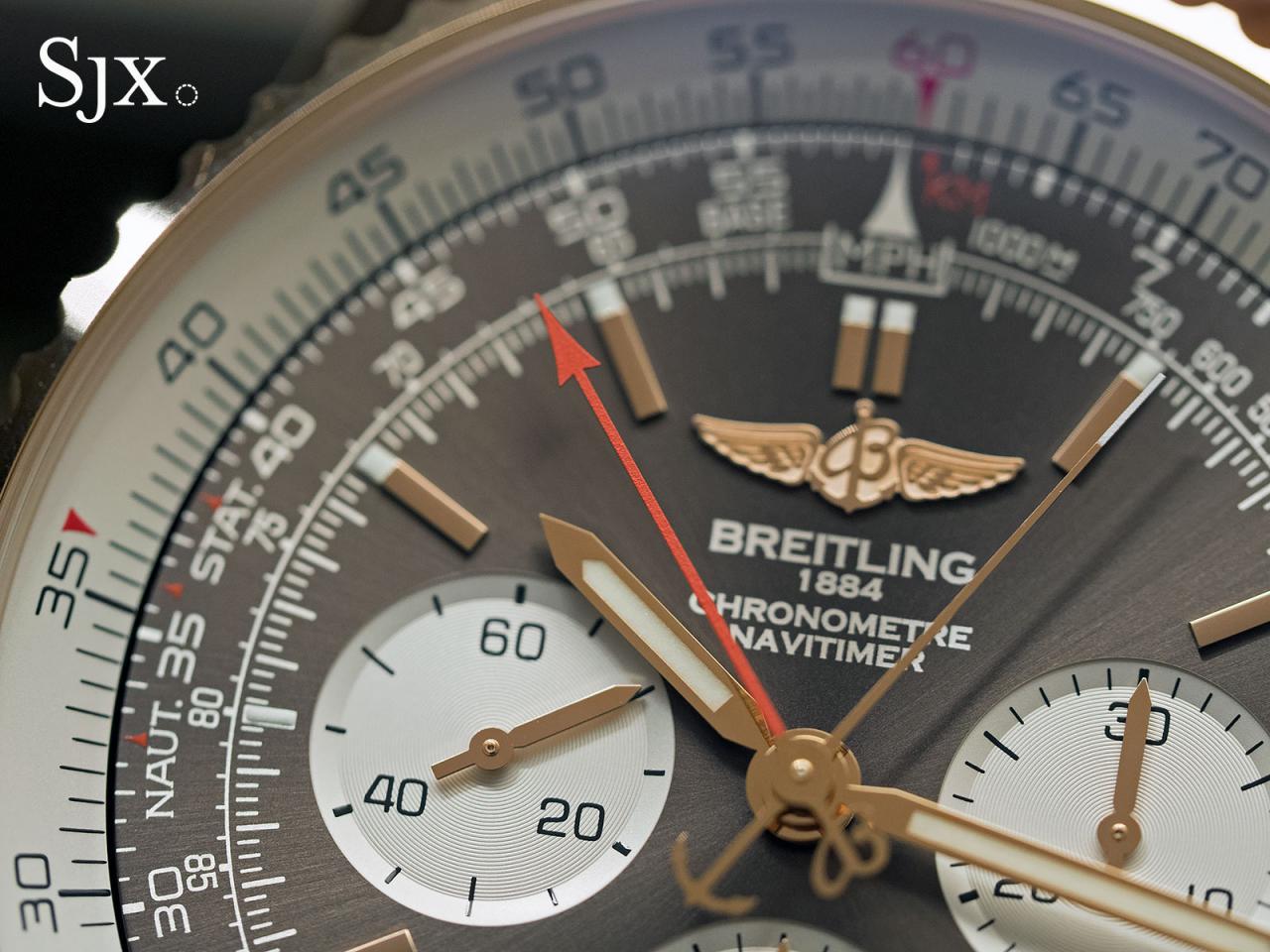
Since the goal is to bring the excitement of aviation and fighter pilots to the ordinary consumer who does not want an overly extreme or expensive wristwatch, even watches within the new pillars will undergo some tweaks, ranging from the prosaic to the philosophical. Despite the dozen lines that make up Breitling’s line-up at the moment, the dominant colour is black. If Kern’s track record at IWC is anything to go by, blue, brown, grey, “warmer” colours as he puts them, will become more prominent.
As consumer tastes are now more practical, the comically large watches that are 46mm, 48mm, and 50mm will become fond memories or better still, highly sought-after limited editions. At IWC the oversized and bulky Ingenieur watches – after many years of reiterating the same idea – were mostly abandoned in favour of modestly sized, affordably priced models.
And to achieve affordable prices, there will probably be a return to low-cost, outsourced movements, which means less of the pricey in-house Breitling 01 movement (the same calibre Breitling sells to Tudor), or a developing a lower cost movement, which is what IWC did. Breitling chronographs with an in-house movement account for about a quarter of output at Breitling, but cost almost double otherwise identical models powered by the Valjoux 7750. Already many of the latest Pilot’s watches at IWC cannily rely on Sellita or ETA movements, or “manufacture” movements built on the foundations of an ETA.
At the same time, Breitling’s pool of celebrity ambassadors will probably grow from its current pool of one, since its only other ambassador just decamped for Tudor. John Travolta has been a Breitling ambassador for over a decade and is now 63 years old, so it stands to reason that a more diverse group of ambassadors in tune with current pop culture is on the cards as well.
In contrast, IWC counts amongst its “friends of the brand” Kevin Spacey, Karolina Kurkova and Adriana Lima. Intriguingly, insiders say that IWC’s friends are literally friends, instead of contracted personalities as many celebrity endorsements are. So the question will be: whose friends are they?
Making friends around the world
Of the world’s 20 largest luxury watchmakers, only six are independent – that includes Breitling – and do not belong to a luxury conglomerate like LVMH or the Swatch Group. And of that six, four control majority of their distribution worldwide, only Breitling and Franck Muller do not. Rolex, Patek Philippe, Audemars Piguet and Chopard own most local distributors across the world, giving them both flexibility and discipline in prices and how to sell watches.
While Breitling does own some key national distributors, in the USA, UK and Japan (where it is outstandingly successful with its Breitling owner’s club), much of its distribution network is independent, even in major markets. Germany is handled by Trautmann, Brazil by Watch Time, while China, Hong Kong and much of South-East Asia is run by Melchers.
The reason that matters is pricing discipline, which usually translates into increased brand equity. Anecdotal evidence would indicate there are more Breitling watches on the grey market than IWC: there are just over 3700 IWC watches described as “new” on eBay, compared to over 7800 for Breitling. Even adjusting for Breitling’s bigger output by volume, making perhaps 40% more units than IWC, that is a major disparity.
When Richemont acquired IWC in 2000, distribution was similarly fragmented. Most of its Asian distribution, for example, was undertaken by Hagemeyer-Cosa Liebermann, a Dutch trading house now owned by its Swiss rival DKSH. Now IWC is distributed by the local or regional Richemont office in practically every market, alongside all the other brands in the group’s stable. Economies of scale in back office functions like distribution are a crucial reason why luxury conglomerates work.
Breitling, on the other hand, is one of the smallest independently-owned watchmakers, less than half the size of the next largest, Chopard (which also sells jewellery). Consequently, Breitling probably lacks the financial muscle to control distribution globally. The solution might instead be a ruthless but prudent pruning of distributors and retailers, with greater reliance on reliable partners.
Feasible only with strong, hands-on leadership, that would be similar to what Jean-Claude Biver practiced as he turned Hublot around. Even after Hublot was acquired by LVMH, the watchmaker still retains independent distributors in important markets like South-East Asia where it works with The Hour Glass, and Ares Distributors in the USA.
While it is his time at IWC that made Georges Kern a power player in the watch industry, it is perhaps his earlier role in TAG Heuer that might be instructive as to what will unfold at Breitling. Before joining Richemont in 2000, just after it acquired the group that owned IWC, Jaeger-LeCoultre and A. Lange & Söhne, Kern spent eight years at TAG Heuer, which was then the most acclaimed turnaround story in watchmaking. It was his first job in the watch business, following a short stay at Kraft, and one that Kern has stated was a formative experience.
In 1988, a trio of Booz Allen Hamilton management consultants were hired by the Saudi-owned investment firm Techniques d’Avant Garde (TAG) to rebuild the ailing business. The three consultants, including brand president Christian Viros, embarked on a strategy of aggressive outsourcing and even more aggressive marketing (with the tagline “Don’t Crack Under Pressure” that’s been revived recently), leading to revenue growth of averaging almost 30% a year.
By the time of the NYSE IPO in 1996, sales topped US$300m, some six-times what they were in 1988. The stock offering was 10-times oversubscribed, allowing its owners to make several times their initial investment, and the three consultants to walk away with reputed eight-figure payouts. And that is probably what CVC and Kern will hope to do.
C
